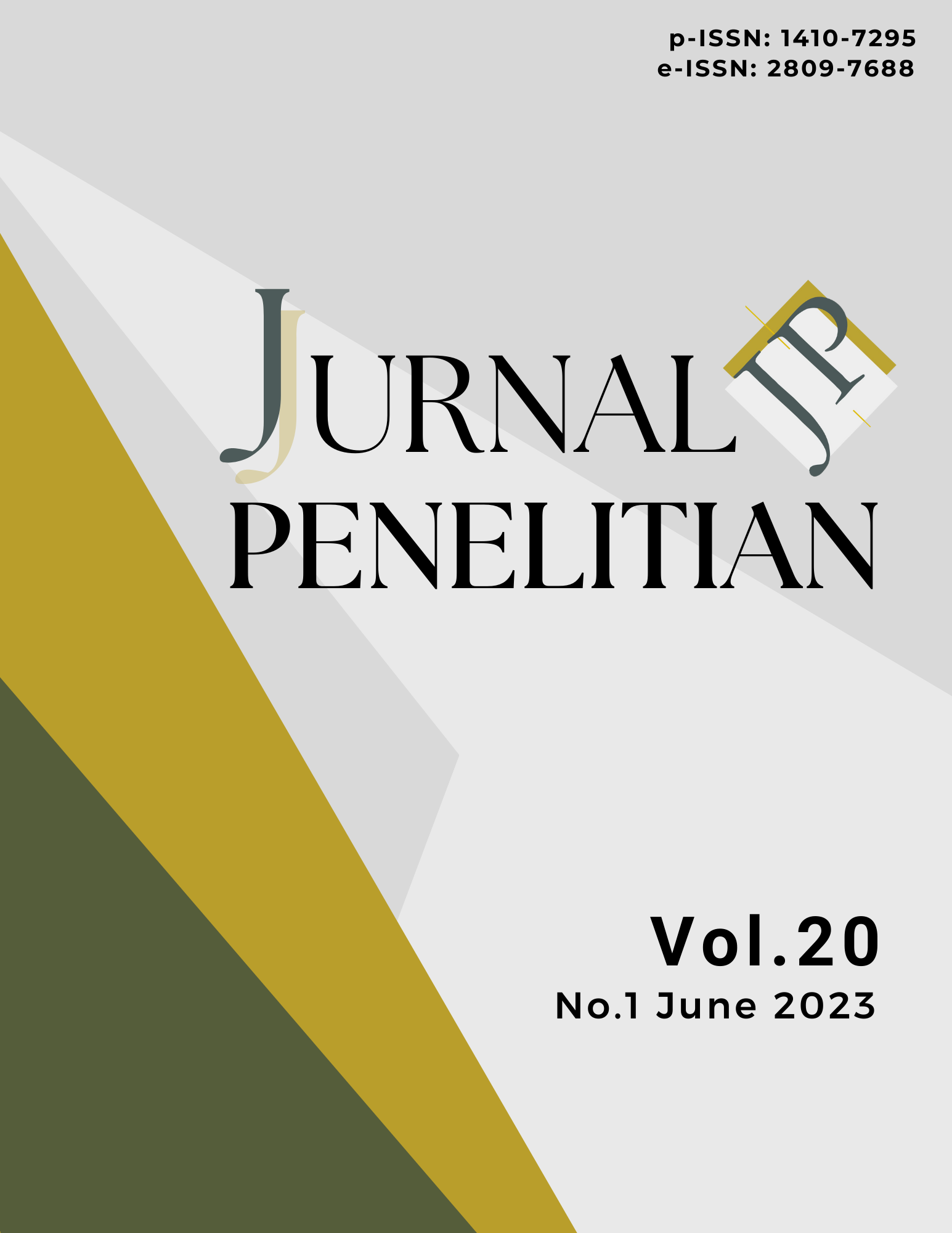Analyzing financial distress in the Indonesian Tourism Sector: A case study during the COVID-19 Pandemic
DOI:
https://doi.org/10.26905/jp.v20i1.11277Keywords:
COVID-19, Financial distress, TourismAbstract
The COVID-19 pandemic has had a significant negative impact on the financial state of various businesses in the Indonesian tourism industry. To prevent bankruptcy from occurring, it is important to assess the financial situation of affected companies to estimate financial distress. This research aims to analyze the effect of return on assets, current ratio, and debt to total asset ratio on financial distress conditions in tourism sub-sector service companies listed on the Indonesia Stock Exchange for the 2019-2022 period. The population in this research were all tourism sub-sector service companies listed on the Indonesia Stock Exchange that published their financial reports in 2019-2022. The sample was searched by purposive sampling and there were 32 companies and obtained 128 observation data consisting of 112 samples of financial distress companies and 16 samples of non-financial distress companies. Financial distress criteria are measured by interest coverage ratio. The statistical analysis used in this research is logistic regression. The results of this research indicate that partial return on assets and debt to total asset ratio affect financial distress, while the current ratio does not affect financial distress. Simultaneously return on assets, current ratio, and debt to total asset ratio affect financial distress.
Downloads
References
Amanda, Y., & Tasman, A. (2019). Pengaruh likuiditas, leverage, sales growth dan ukuran perusahaan terhadap financial distress pada perusahaan manufaktur yang terdaftar di Bursa Efek Indonesia (BEI) periode 2015-2017. Jurnal Ecogen, 2(3), 453-462. http://dx.doi.org/10.24036/jmpe.v2i3.7417
Ashraf, S., GS Félix, E., & Serrasqueiro, Z. (2019). Do traditional financial distress prediction models predict the early warning signs of financial distress? Journal of Risk and Financial Management, 12(2), 55. https://doi.org/10.3390/jrfm12020055
Azky, S., Suryani, E., & Tara, N. A. A. (2021). Pengaruh rasio keuangan terhadap financial distress pada perusahaan jasa sub sektor restoran, hotel & pariwisata yang terdaftar di Bursa Efek Indonesia. Jmm Unram-Master of Management Journal, 10(4), 273-283. https://doi.org/10.29303/jmm.v10i4.691
Karimah, I., & Sukarno, A. (2023). Analisis pengaruh current ratio, total asset turnover, return on asset dan debt to equity ratio terhadap financial distress: Studi kasus pada perusahaan otomotif dan komponen yang terdaftar di Bursa Efek Indonesia (BEI) tahun 2018-2021. Jurnal Ilmiah Manajemen Kesatuan, 11(1), 145-152. https://doi.org/10.37641/jimkes.v11i1.1733
Kasmir, K. (2019). Analisis laporan keuangan (12nd Edition). Jakarta: Raja Grafindo Persada.
Kusuma, E., & Sumani, S. (2017). Pengaruh likuiditas, leverage dan profitabilitas terhadap financial distress (Z-Score) perusahaan property, real estate, dan manufaktur periode 2014-2016. Jurnal Manajemen, 14(1), 1-16. https://doi.org/10.25170/jm.v14i1.794
Novyarni, N., & Dewi, M. (2020). Pengaruh sales growth, leverage, operating capacity dan ukuran perusahaan terhadap prediksi kesulitan keuangan. In Prosiding Konferensi Nasional Ekonomi Manajemen dan Akuntansi (KNEMA), 1(1), 12–22.
Pietrzak, M. (2021, July). Can financial soundness indicators help predict financial sector distress? (Working Paper No. 2021/197). https://doi.org/10.2139/ssrn.4026397
Putri, D. S., & Erinos, N. R. (2020). Pengaruh rasio keuangan, ukuran perusahaan dan biaya agensi terhadap financial distress. Jurnal Eksplorasi Akuntansi, 2(1), 2083-2098. https://doi.org/10.24036/jea.v2i1.199
Rinofah, R., Sari, P. P., & Fidiastuti, F. (2021). Kekuatan rasio likuiditas, aktivitas, leverage, profitabilitas, dan arus kas operasi dalam memprediksi kondisi financial distress perusahaan. Jurnal Manajemen, 13(4), 784-794. https://doi.org/10.30872/jmmn.v13i4.10351
Rissi, D. M., & Herman, L. A. (2021). Pengaruh likuiditas, profitabilitas, financial leverage, dan arus kas operasi dalam memprediksi kondisi financial distress. Akuntansi dan Manajemen, 16(2), 68-86. https://doi.org/10.30630/jam.v16i2.143
Sopian, D., & Rahayu, W. P. (2017). Pengaruh rasio keuangan dan ukuran perusahaan terhadap financial distress (studi empiris pada perusahaan food and beverage di Bursa Efek Indonesia). Competitive Jurnal Akuntansi dan Keuangan, 1(2). http://dx.doi.org/10.31000/competitive.v1i2.240
Susanti, W., & Takarini, N. (2022). Pengaruh likuiditas, profitabilitas, leverage, dan aktivitas dalam memprediksi financial distress pada perusahaan subsektor retail trade yang terdaftar di BEI. Ekonomis: Journal of Economics and Business, 6(2), 488-497. http://dx.doi.org/10.33087/ekonomis.v6i2.591
Thinh, T. Q., Tuan, D. A., Huy, N. T., & Thu, T. N. A. (2021). Financial distress prediction of listed companies–empirical evidence on the Vietnamese stock market. Innovations, 17(2), 377-388. http://dx.doi.org/10.21511/imfi.17(2).2020.29
Yoda, T. C., Rahim, R., Reswita, Y., & Sari, F. P. (2021). Pengaruh kepemilikan manajerial, likuiditas dan ukuran perusahaan terhadap financial distress studi kasus pada perusahaan perhotelan, restoran dan pariwisata yang terdaftar di Bursa Efek Indonesia periode 2015-2019. Jurnal Ilmiah Mahasiswa Ekonomi Manajemen, 6(3), 632-645. https://doi.org/10.24815/jimen.v6i3.17377
Yudiawati, R., & Indriani, A. (2016). Analisis pengaruh current ratio, debt to total asset ratio, total asset turnover, dan sales growth ratio terhadap kondisi financial distress (Studi kasus pada perusahaan manufaktur yang terdaftar di BEI Tahun 2012-2014). Diponegoro Journal of Management, 5(2), 379-391.
Downloads
Published
How to Cite
Issue
Section
License
Copyright (c) 2023 Jurnal Penelitian

This work is licensed under a Creative Commons Attribution-ShareAlike 4.0 International License.
Authors who publish in this journal agree to the following terms:
- Copyright of the published articles will be transferred to the journal as the publisher of the manuscripts. Therefore, the author confirms that the journal has managed the copyright.
- Publisher of Abdimas: Jurnal Pengabdian Masyarakat Universitas Merdeka Malang is University of Merdeka Malang.
- The copyright follows the Creative Commons Attribution-ShareAlike License (CC BY SA): This license allows to share, copy, and redistribute the material in any medium or format, adapt, remix, transform, and build upon the material, for any purpose, even commercially.


